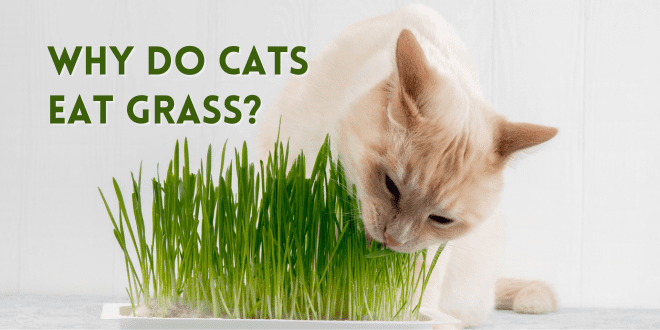
If you have a cat who is allowed access to the outdoors, I’m sure that at some point you’ve probably seen them nibbling on a few blades of grass in your yard. I’m also sure that immediately afterward you’ve probably seen your cat throw that grass right back up. It might seem odd that a cat would enjoy eating something that obviously makes him sick, but there are a few theories that seem to indicate grass nibbling actually serves a valuable function.
It Must Be Something I Ate
Cats may eat grass as a way of ridding their digestive tract of something unpleasant or inedible. Grass nibbling may be of particular importance to outdoor cats who eat prey in order to get rid of any inedible parts that get swallowed (feathers, bones, etc.). It can also be a way for a cat to get rid of some hair that gets swallowed during grooming which may cut down on hairballs.
Speaking of Hairballs
Hairballs that don’t get vomited back up, go through the intestinal tract. Sometimes those hairballs don’t pass so easily out the other end. Cats might instinctively know that the added fiber from eating grass may help lubricate things in the south end so hairballs and fecal matter pass more easily.
Providing Nutrients
Another theory is that cats may eat grass for the nutrients it contains. Typically, when a cat eats prey such as a mouse, he would also be consuming the contents of the prey’s stomach. The prey’s stomach typically contains grasses and grains.
Is Eating Grass Harmful?
Eating grass is typically not harmful. If you have an outdoor cat though, you wouldn’t want him eating grass that has been chemically treated. The safest way to provide grass for your cat is to grow a pot of it. You can either purchase a kitty greens kit at your local pet product store or online, or grow your own using rye, wheat or oat seeds. In fact, providing your cat with some safe kitty greens may help prevent him from nibbling on dangerous houseplants – which ARE toxic to cats.
Don’t confuse grass-eating with plant-eating. Almost all houseplants are toxic to cats and most are poisonous. Keep plants out of your cat’s reach.
Need More Information?
For more information on cat behavior and training, refer to the best-selling books by Pam Johnson-Bennett. Pam’s books are available at bookstores and online. We’ve included links to Amazon here on our website.



